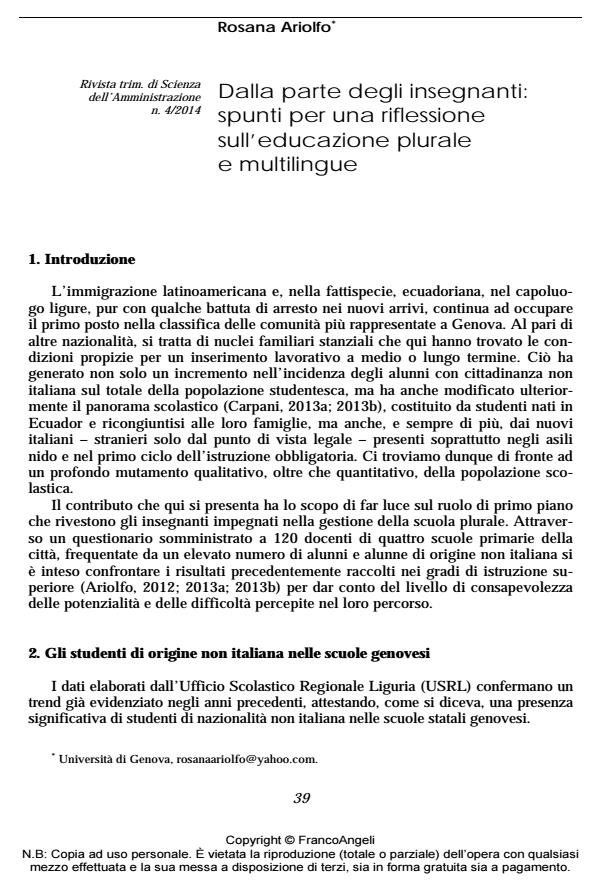From the teachers’ side: ideas for a reflection on plural and multilingual education
Journal title RIVISTA TRIMESTRALE DI SCIENZA DELL’AMMINISTRAZIONE
Author/s Rosana Ariolfo
Publishing Year 2015 Issue 2014/4
Language Italian Pages 14 P. 39-52 File size 65 KB
DOI 10.3280/SA2014-004003
DOI is like a bar code for intellectual property: to have more infomation
click here
Below, you can see the article first page
If you want to buy this article in PDF format, you can do it, following the instructions to buy download credits

FrancoAngeli is member of Publishers International Linking Association, Inc (PILA), a not-for-profit association which run the CrossRef service enabling links to and from online scholarly content.
After a brief contextualization of the situation of the foreign school population who attends schools in Genoa, this contribution aims to shed light on some aspects of the educational situation in Genoa, in particular, on the vision that the school has regarding the use of the source language within the family and school contexts as well as to other issues related to such use and the possible solutions proposed by teachers. The analysis of the data emerging from the questionnaires submitted to teachers of four primary schools with a large number of foreign students was intended to stimulate the reflection among the parties involved in the school (Ariolfo, 2012; 2013a; 2013b) with the aim to encourage a deeper awareness of potentials, as well as the difficulties posed by schools with students with a foreign background (Lorenzo, 2011).
Keywords: Primary school, alloglot families, bilingualism
Rosana Ariolfo, Dalla parte degli insegnanti: spunti per una riflessione sull’educazione plurale e multilingue in "RIVISTA TRIMESTRALE DI SCIENZA DELL’AMMINISTRAZIONE" 4/2014, pp 39-52, DOI: 10.3280/SA2014-004003